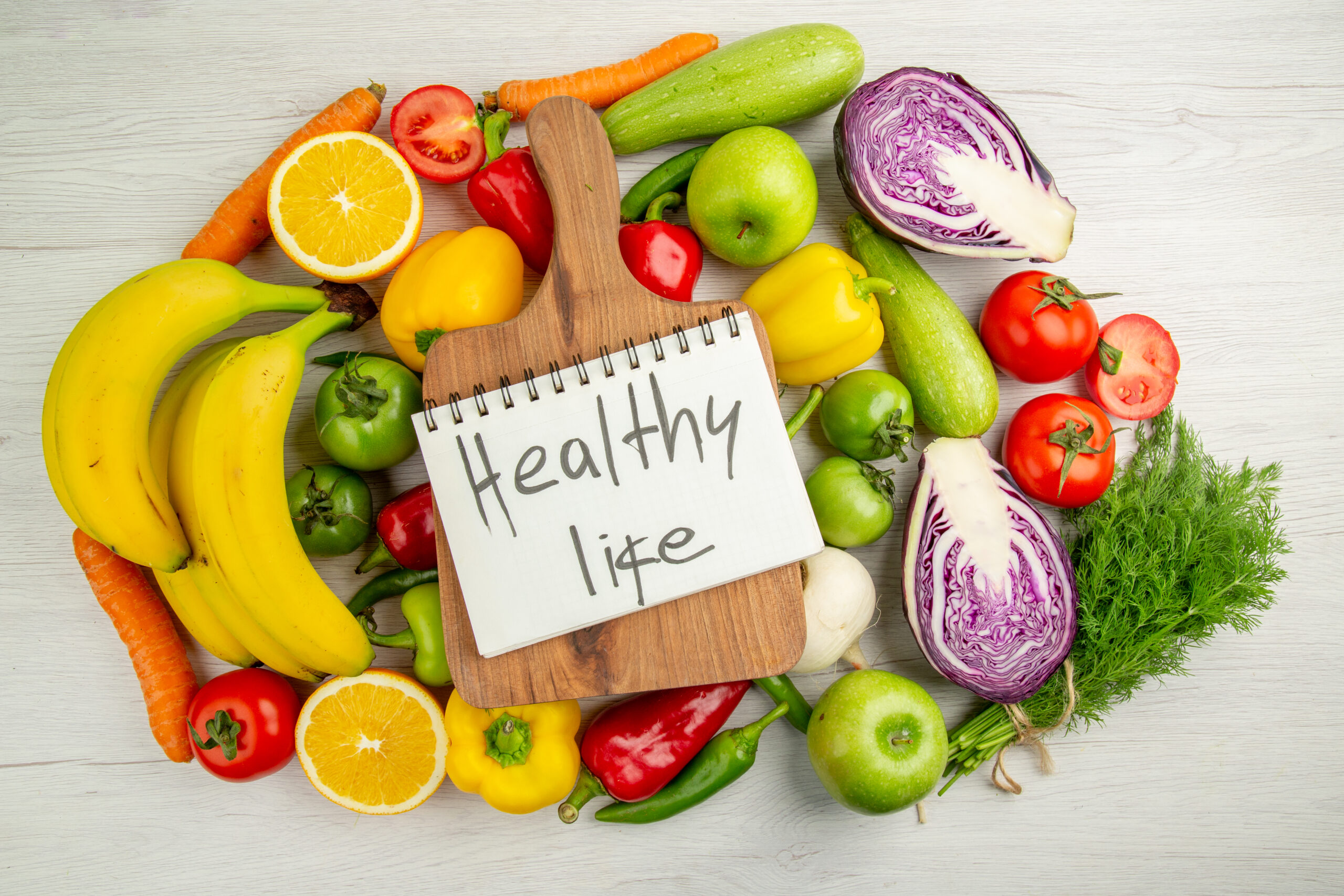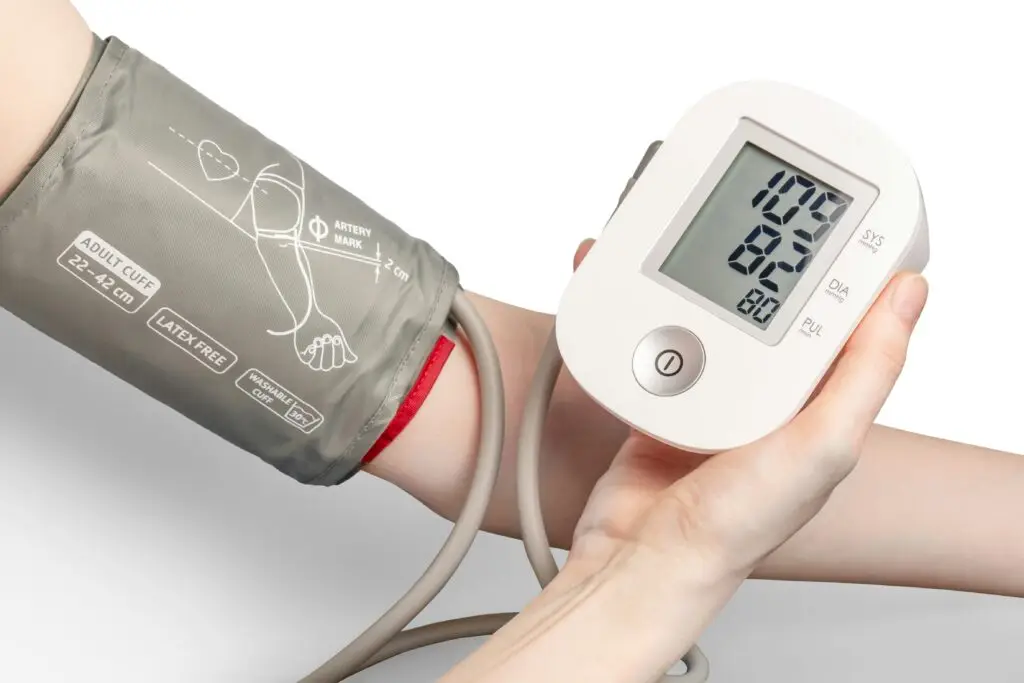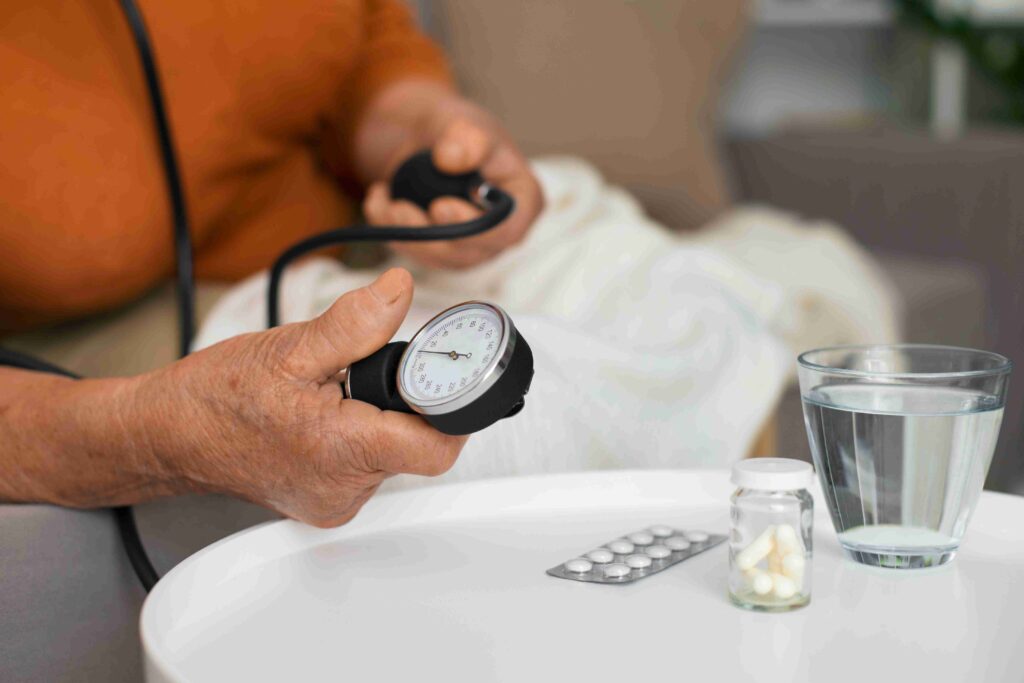
Hypertension, commonly known as high blood pressure, is a chronic condition often called the “silent killer” because it typically shows no symptoms until it causes serious issues like heart attack, stroke, or kidney damage. According to the World Health Organization, approximately 116 million Americans, nearly half of all U.S. adults have hypertension, and over 30% are unaware of their condition and thus untreated. This lack of awareness highlights the importance of regular blood pressure checks. Managing hypertension through lifestyle changes, and sometimes medications, is essential to reduce risks and improve health. This article explores why healthy blood pressure matters, key lifestyle changes to manage hypertension, and the importance of partnering with healthcare professionals.
Importance of Healthy Blood Pressure
Maintaining healthy blood pressure ensures that nutrient-rich and oxygen-laden blood is delivered efficiently to all organs and tissues, enabling them to function properly. The heart pumps blood through arteries, creating pressure to circulate it throughout the body. However, excessive pressure can damage blood vessels, strain the heart, and harm organs like the kidneys, brain, and eyes. Blood pressure is measured in millimeters of mercury (mmHg) and recorded as two numbers: systolic and diastolic.
- Systolic Blood Pressure: The top number, representing the pressure in arteries when the heart contracts or beats, pushing blood out.
- Diastolic Blood Pressure: The bottom number, indicating the pressure in arteries when the heart rests between beats.
Accurate Blood Pressure
ReadingsThe American Heart Association and American College of Cardiology categorize blood pressure as follows:
- Normal: Systolic less than 120 mmHg and diastolic less than 80 mmHg (e.g., 120/80 mmHg).
- Elevated: Systolic 120–129 mmHg and diastolic less than 80 mmHg.
- Hypertension Stage 1: Systolic 130–139 mmHg or diastolic 80–89 mmHg.
- Hypertension Stage 2: Systolic 140 mmHg or higher or diastolic 90 mmHg or higher.
- Hypertensive Crisis: Systolic higher than 180 mmHg and/or diastolic higher than 120 mmHg (requires immediate medical attention).
Regular monitoring is critical, as hypertension often develops without symptoms, increasing the risk of heart disease, stroke, and other complications if left unchecked.
What to Do to Manage Hypertension
Managing hypertension typically involves a combination of lifestyle changes and, in some cases, medications. For individuals with elevated blood pressure or Stage 1 hypertension, lifestyle modifications are often the first step and may reduce or eliminate the need for medications. For those with Stage 2 hypertension or additional risk factors (e.g., diabetes, kidney disease), doctors may prescribe medications alongside lifestyle changes to achieve target blood pressure levels, usually below 130/80 mmHg for high-risk individuals or 140/90 mmHg for others. Common medications include:
- ACE Inhibitors (e.g., lisinopril): Relax blood vessels to lower pressure.
- Angiotensin II Receptor Blockers (ARBs) (e.g., losartan): Prevent blood vessel constriction.
- Calcium Channel Blockers (e.g., amlodipine): Relax and widen blood vessels.
- Diuretics (e.g., hydrochlorothiazide): Reduce fluid volume by eliminating excess sodium and water.
Lifestyle changes, detailed in the next section, are foundational for all patients, as they not only lower blood pressure but also improve overall cardiovascular health.
The Main Lifestyle Changes to Maintain Healthy Blood Pressure
Adopting a heart-healthy lifestyle is essential for managing hypertension and preventing its complications. Below are the seven key lifestyle changes, with practical steps to implement them effectively
1. Healthy, Balanced Diet
 A nutrient-rich diet is vital for controlling blood pressure. The Dietary Approaches to Stop Hypertension (DASH) diet is particularly effective, focusing on fruits, vegetables, whole grains, lean proteins, and low-fat dairy while reducing saturated fats, trans fats, and sodium. Research from the DASH trial shows this diet can lower systolic blood pressure by about 5.5 mmHg and diastolic by 3.0 mmHg. Potassium-rich foods are especially important, as they help counteract sodium’s effects on blood pressure.
A nutrient-rich diet is vital for controlling blood pressure. The Dietary Approaches to Stop Hypertension (DASH) diet is particularly effective, focusing on fruits, vegetables, whole grains, lean proteins, and low-fat dairy while reducing saturated fats, trans fats, and sodium. Research from the DASH trial shows this diet can lower systolic blood pressure by about 5.5 mmHg and diastolic by 3.0 mmHg. Potassium-rich foods are especially important, as they help counteract sodium’s effects on blood pressure.
- Eat potassium-rich foods: Include bananas, sweet potatoes, spinach, avocados, and beans, aiming for 3,500–5,000 mg of potassium daily.
- Choose whole grains: Opt for brown rice, quinoa, and whole-grain bread instead of refined grains.
- Limit processed foods: Avoid canned soups, processed meats, and fast food, which are often high in sodium and unhealthy fats.
- Incorporate healthy fats: Use olive oil, nuts, and seeds for monounsaturated and polyunsaturated fats, avoiding saturated or trans fats.
2. Physical Exercise
Regular physical activity strengthens the heart, reduces arterial stiffness, and lowers blood pressure. The American Heart Association recommends at least 150 minutes of moderate-intensity aerobic exercise (e.g., brisk walking, cycling) or 75 minutes of vigorous exercise (e.g., running, swimming) per week, plus strength training twice weekly. Exercise can reduce systolic blood pressure by 4–8 mmHg.
- Start small: Begin with 10–15 minute walks if new to exercise, gradually increasing duration and intensity.
- Mix activities: Combine cardio (e.g., dancing, swimming) with strength exercises (e.g., bodyweight squats, resistance bands).
- Stay consistent: Schedule workouts at the same time daily to build a habit.
- Get medical clearance: Consult a doctor before starting a new exercise routine, especially if you have existing health conditions.
3. Limit Salt and Sodium Intake
Excess sodium causes fluid retention, which increases blood pressure. The World Health Organization recommends less than 5 grams of salt (about 2,000 mg of sodium) daily, with an ideal target of 1,500 mg for most adults. Reducing sodium by 1,000 mg daily can significantly lower blood pressure within weeks.
- Read food labels: Check sodium content in packaged foods and choose low-sodium options (less than 140 mg per serving).
- Cook at home: Prepare meals to control salt use, avoiding pre-packaged sauces and seasonings.
- Use alternatives: Season with herbs, spices, lemon, or vinegar instead of salt.
- Limit discretionary salt: Reduce salt added during cooking or at the table, which accounts for about 25% of intake in some populations.
4. Limit Alcohol

Excessive alcohol consumption raises blood pressure, particularly in men. Moderate drinking—up to one drink per day for women and two for men—is recommended. One drink equals 12 ounces of beer, 5 ounces of wine, or 1.5 ounces of 80-proof liquor. Reducing alcohol can lower systolic blood pressure by about 4 mmHg.
- Track consumption: Use a journal or app to monitor alcohol units, aiming for no more than 14 units weekly.
- Choose non-alcoholic options: Opt for sparkling water, herbal teas, or mocktails.
- Avoid binge drinking: Spread drinks over the week rather than consuming heavily in one sitting.
- Seek support: Consult a healthcare provider or join a support group if reducing alcohol is challenging.
5. Avoid Smoking
Tobacco use, including smoking, vaping, and smokeless tobacco, damages blood vessels, increases heart rate, and raises blood pressure. Quitting smoking is one of the most effective ways to improve cardiovascular health and manage hypertension.
- Set a quit date: Choose a specific date and create a plan to stop smoking.
- Use cessation aids: Consider nicotine replacement therapies (e.g., patches, gum) or medications like bupropion, prescribed by a doctor.
- Seek counseling: Join a support program like Quitline (Tel: 13 7848 in Australia) or local support groups.
- Replace habits: Swap smoking with healthy activities like chewing gum, deep breathing, or exercise.
6. Be Blood Pressure Free
TobaccoTobacco use, including smoking, vaping, and smokeless tobacco, damages blood vessels, increases heart rate, and raises blood pressure. Quitting smoking is one of the most effective ways to improve cardiovascular health and manage hypertension.
- Choose validated monitors: Select devices approved by the American Heart Association or FDA, such as:
- Omron Platinum BP5450: Accurate, stores multiple readings, and syncs with apps.
- Withings BPM Connect: Portable, Wi-Fi-enabled, and user-friendly.
- Welch Allyn Home 1700 Series: Reliable with a wide cuff for larger arms.
- Choose validated monitors: Select devices approved by the American Heart Association or FDA, such as:
- Measure correctly: Take readings in a quiet setting, sitting with the cuff on the upper arm, after resting for 5 minutes.
- Track trends: Record readings daily (morning and evening) and share logs with your doctor.
- Calibrate devices: Ensure accuracy by comparing with readings at a doctor’s office.
7. Ease Stress
Chronic stress can temporarily elevate blood pressure and lead to unhealthy habits like overeating or smoking, which further increase blood pressure. Stress management techniques, such as meditation and yoga, can reduce the risk of heart attacks and strokes in hypertensive individuals.
- Practice mindfulness: Engage in meditation or deep-breathing exercises for 10–15 minutes daily.
- Try relaxation techniques: Explore yoga, tai chi, or progressive muscle relaxation.
- Stay socially connected: Spend time with supportive friends or family to reduce feelings of isolation.
- Seek professional help: Consult a therapist or counselor if stress feels overwhelming .
Partner in Health
Managing hypertension is a lifelong commitment to protecting your heart and overall well-being. By adopting these lifestyle changes you can significantly lower your blood pressure and reduce the risk of serious complications. These steps work best when paired with regular consultations with your healthcare provider, who can tailor a plan to your needs, including medications if necessary. For personalized guidance or further questions, don’t hesitate to contact a healthcare professional or reach out to Me at Drzaramulla@gmail.com . Take control of your heart health today with proactive steps for a healthier, longer life!

